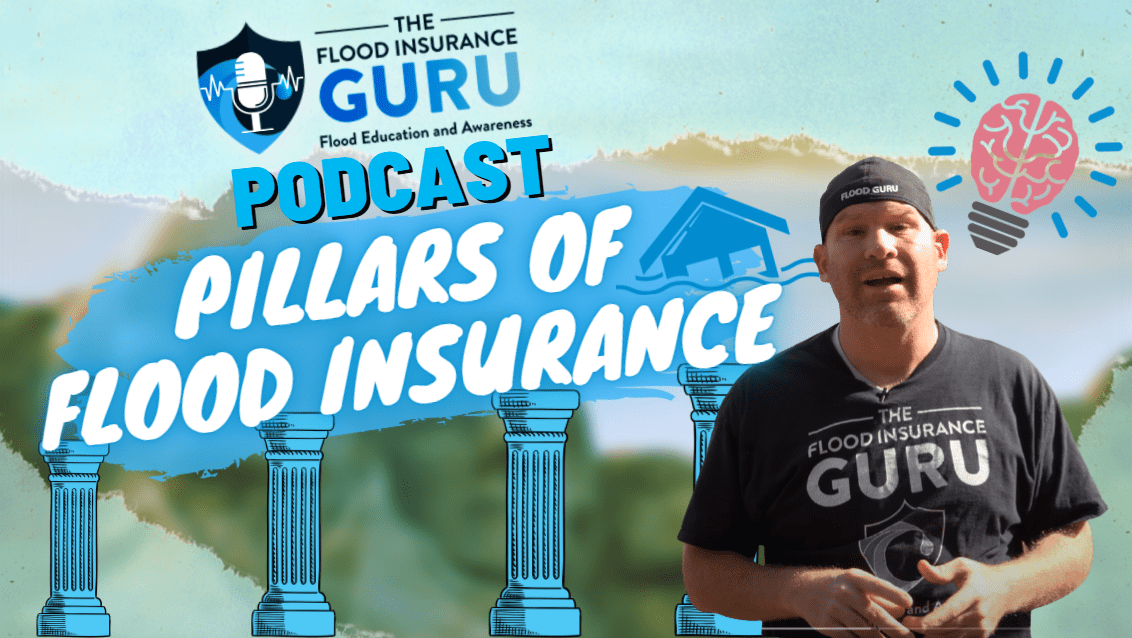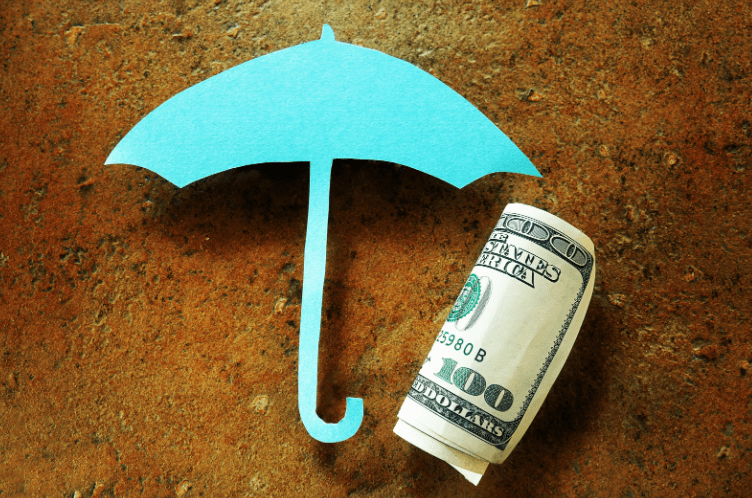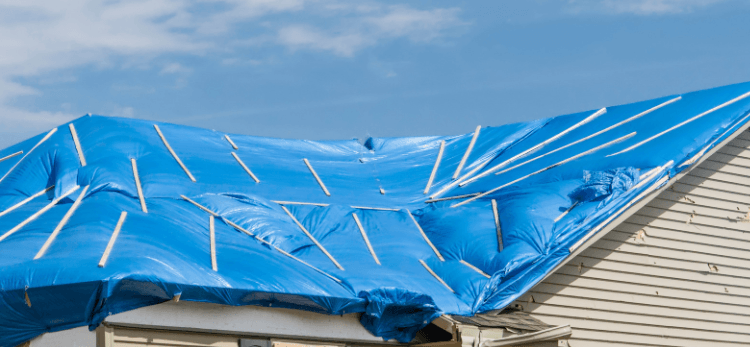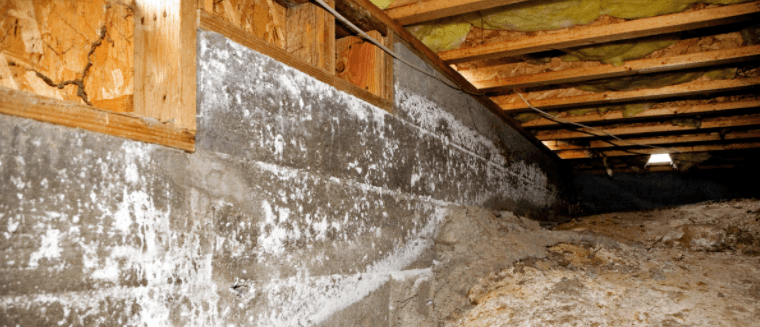The Flood Insurance Guru Podcast Episode 13: Pillars of Flood Insurance
August 1st, 2019
5 min read
By Chris Greene

We want you to have these pillars be part of your system.
In today's episode, we'll discuss the four pillars of flood insurance: preparedness, response, recovery, and mitigation, learn how each stage impacts both flood insurance and flood insurance claims.

Preparedness
I'm a great believer that everything in life is best to be prepared for. When it comes to flood preparation though, most people think that it means you put sandbags around your house and be ready to block floodwater from inundating your property. This isn't what "being prepared" means however since where we stand, flood damage is becoming more destructive and flood disasters are equally as devastating. Preparedness means having the right coverages from your policy and making sure you always have one for each property you have, so when a flood occurs you know exactly what to expect.
Property Coverage
Now, what we mean by looking into coverage is commonly misunderstood. You might see, for example in a National Flood Insurance Program (NFIP) policy, a property coverage of $250,000. Most policyholders think "Well, I think I'm good since I've got 250 grand in my insurance", but this isn't really the case whether the policy is from the NFIP and Federal Emergency Management Agency (FEMA) or even the private market. You have to consider what's called a loss settlement. This is how losses are agreed upon which means not because you have $250,000 written, you're going to receive that same amount in coverage. It could be much less.
Looking back, the victims of Hurricane Harvey and Sandy had the same experience where they only got a fraction of what was in their policy and many people were surprised by this. You want to make sure that you're prepared when it comes to what's covered on your building or property because I know I'd triple-check it.
Content Coverage
When we look at content coverage, you want to make sure that you have replacement costs with your property so that when a flood occurs, you won't lose everything. This can actually be a reset button for your life since having contents covered can be the difference between losing everything or losing nothing. Replacement costs are what we really encourage that you make sure to get if possible. This simply means that if you were hit by a flood and say your household appliances were totaled by the event, you want to make sure through replacement cost that you're going to get money for the amount of these items if you were to buy them today — not ten years ago or even a year ago.
I know some friends and customers who almost have the same value of their property with the contents inside their home, so if you know you have invaluable items in your household that you can't afford to lose, your policy will cover it.

Temporary Living Expenses
This is also known sometimes as "additional living expenses". Generally, federal flood insurance won't provide you coverage for this. Temporary living expenses basically the cost of living you'll have while your property is being repaired; this can be through basic necessities if you're temporarily moving into your family or friend's house, or if other expenses like rent when you choose to go to a hotel. Now, it's important to note that only a presidential declaration can give way for you to get this through your NFIP policy through the disaster assistance program. However, when it comes to the private market, this is generally available and covered although through a reimbursement basis.
Regardless you want to make sure that you at least have a buffer and you're prepared separately when it comes to temporary living expenses since flood claims may take a long period of time to be processed. It's also best to be ready when it comes to your deductible which is something you should be able to pay upfront. There are some who do a $5000 to $10,000 deductible despite knowing that they don't have that money in their account. This can really delay your flood claim big time if you find yourself in this kind of situation.
At the end of the day, understanding your own flood insurance policy is the best key to preparedness.
Response
Picture yourself standing in three feet of floodwater and you're not sure what to do. Now, it's important to keep in mind that this is an important time period because whatever happens within the response stage will significantly impact your flood claims for the good or the bad. Now, you're wondering what you should do then because I can remember a time I asked the same question myself.

First, you have to make sure that you get all that water out of your property. Many times floodwater recedes on its own, many times it won't. The best thing to do is to get a mitigation company to get that water removal started which is covered by your flood policy through reimbursement means. This is really integral in minimizing mold damage. Although mold damage is covered by your flood policy, if it was observed to be something that can be prevented, your chances of getting it covered will be extremely slim.
The next step will put your smartphone or any camera at all to use. Once the water's removed, be sure to document the damage by taking pictures as much stuff as you can. This way, when the FEMA or private flood adjuster, you can show them how much was destroyed. In a time where every phone basically has a camera, you won't have any problem with this step.

Recovery
This stage is known for being "the long game" of any unfortunate event from natural disasters. See, the recovery phase starts when the water's cleared and your community might find itself standing on some pile of rubble and all types of losses. This can take from 6 months up to 2 years and more, and if you look at previous hurricane victims, a good chunk of them are still in this stage as they try to bring back their losses, rebuild their properties, and generally battling to get their funds and things like that.
One of the important things to remember in this phase is you're going to face a lot of deadlines. For example, FEMA has a 60-day period for you to file proof of loss to them from the day of your loss or, in this case, flooding. This shows to the federal government that you did suffer a loss.

Another thing to be very careful with is how you get contractors. The NFIP has very different standards and guidelines not just for your property, but for your whole community. Things have to be permitted in a certain way in order for them to be covered by FEMA. If you decide to go on your own and go about it in a cheaper way, FEMA can actually come back and if they see that it didn't meet their guidelines, the money you got for repairs from your federal flood insurance will be taken back.
Mitigation
Now once these things are taken care of. You're prepared with your flood insurance policy, you've responded very well to the flooding, and you've already recovered the losses, it's very important to know how to reduce flood risk as a property owner. This is where things like "why did my property flood?" or "how can I avoid getting flooded again?" come into question.
One of the things that a customer can do is raising their property which isn't really cheap but can be effective especially if you're looking to make sure that you're above the base flood elevation. It's important to note that this must follow the NFIP and FEMA's elevation requirements. This is also covered by the National Flood Insurance Program policy under certain restrictions such as providing up to $30,000 for mitigation efforts on your property. This amount will be included with your $250,000 coverage, however, so if you already exceeded that amount, you're going to find it difficult to get coverage from them.

Another possible option is to build flood vents if you have a crawlspace with your property. This allows the floodwater to continue to flow from one part of your house to another hence preventing the house to be flooded again. You can also redirect water inside your house outside, given that they have an area like a creek, by changing elevation runoffs around your house. Waterproofing basements are also a common option that prevents water from coming in again, and also securing entrances can definitely reduce flood risks on your property long term.
These are the things that are best you know by heart since flood insurance premiums can be expensive and as the flood plain continues to devolve, flood waters can make or break not just the structure of your house, but also the structure of your life.
If you have questions on flood insurance, remember that we have an educational background in flood mitigation and we'll be happy to answer your questions on these steps, your flood insurance options, or anything about flood, feel free to reach out to us by clicking our links below.




